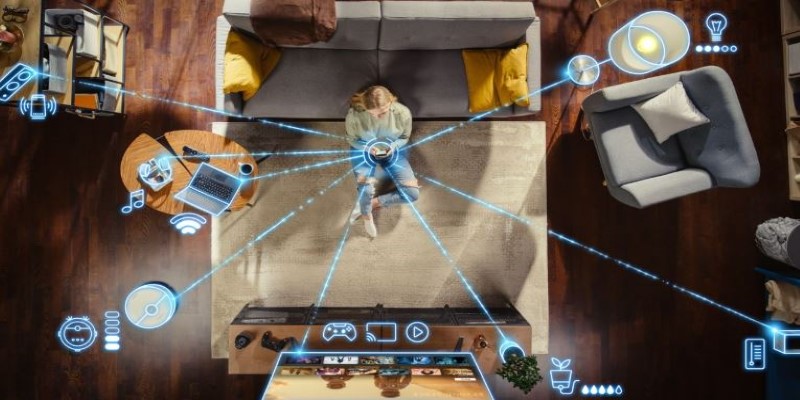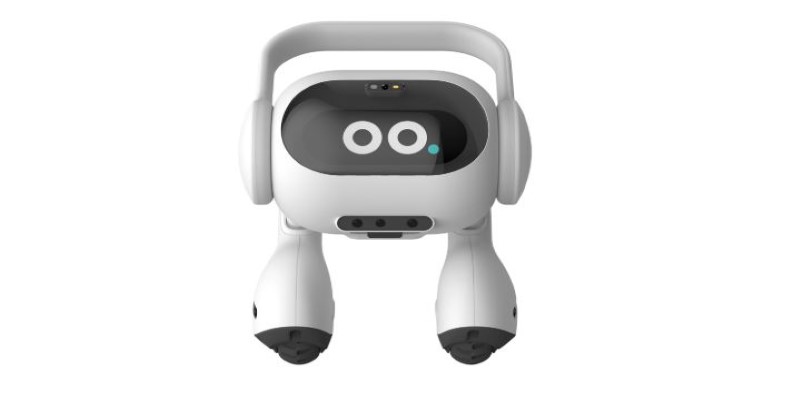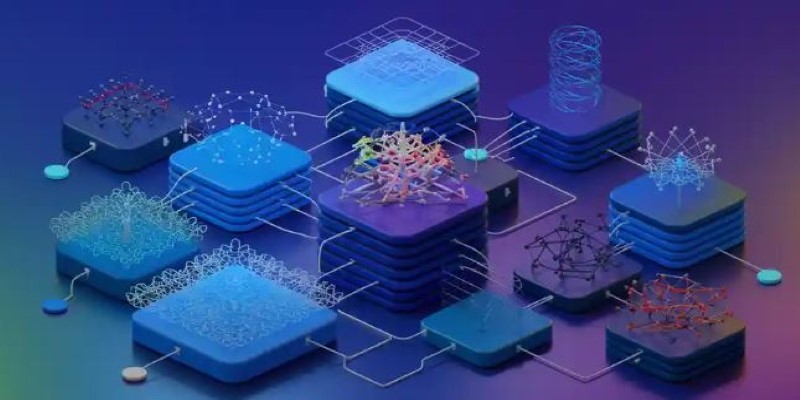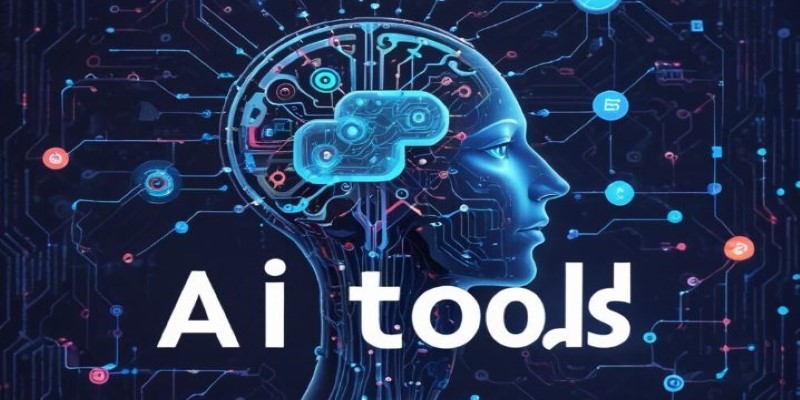Advertisement
Managing a home can feel like juggling with one hand tied. Between chores, scheduling, and unexpected tasks, keeping everything in order often means giving up time for yourself. Technology has stepped in to help here and there—robot vacuums, smart speakers, apps that remind you to water the plants—but these tools often work in isolation. LG is about to change that.
With its new Smart Home AI Agent, the company is trying to bring everything under one roof—literally and digitally. It’s a small robot with a big task: making household management simpler, smoother, and less time-consuming.
What exactly is LG's Smart Home AI Agent? Picture a small robot with personality—think less appliance, more helpful companion. It's about the size of a desktop speaker but with wheels, a digital face, and big, expressive eyes that follow you as it glides across the floor. Unlike stationary devices that sit on a shelf waiting for commands, this one moves with purpose, weaving its way into your daily routine.
It's built to do more than answer basic questions. This little helper connects with LG's smart appliances and compatible gadgets around your home to offer real-time suggestions, reminders, and automation. Left the lights on? I'll let you know. Is the fridge nearly empty? It can track your inventory. Laundry finished? You'll get a heads-up. It doesn't just respond—it observes, learns your habits, and adapts. Instead of juggling half a dozen devices or apps, you get one mobile hub that manages your household with a level of awareness that feels closer to a living assistant than a machine.
One of the standout features of the Smart Home AI Agent is how it handles daily household management. It uses sensors, machine learning, and scheduling data to anticipate needs before they arise. For instance, if it knows you usually do laundry on Saturdays, it can remind you to buy detergent if the stock is low. It can alert you if windows are left open during bad weather or suggest energy-saving actions like reducing appliance use during peak hours.

The AI learns from your behavior. Over time, it builds a routine map: when people wake up, when meals are cooked, and when rooms are used most often. Based on this, it adjusts lighting and temperature and even suggests maintenance when something feels off—like the fridge working harder than usual. It can even track the movement of family members, giving parents a noninvasive way to keep tabs on kids or older relatives.
Voice control plays a big part in this. You can ask it to check your to-do list, change the thermostat, or vacuum the living room. Its mobility adds another layer—it can come to you when called or patrol the house when you're away, acting like a rolling guardian that checks for unusual activity.
LG has designed the Smart Home AI Agent to work best with its line of smart appliances, but it's not limited to them. It supports integration with common smart home standards like Matter and can connect with third-party devices that follow open protocols. That means you won’t need to replace your existing smart plugs, locks, or lights to use it.
The real edge comes from how it ties these devices together. Instead of opening multiple apps or issuing separate voice commands, you can simply talk to the Agent and coordinate with all linked devices. Think of it as the difference between managing each employee separately and having a good manager who knows everyone's strengths and can assign tasks accordingly. That's the level of cohesion this device aims to bring to your home.
Because it’s built on AI, it gets better the longer you use it. The more devices and data it has access to, the more useful its insights become. It's not just reactive; it's predictive. If it knows you usually leave the house at 8 a.m., it might offer to warm up your car, prepare your lunch reminder, and check that all the lights and electronics are turned off.
Privacy concerns haven't been ignored either. LG has stated that users will have complete control over what data is collected and its use. Facial and voice recognition features can be turned off, and all stored information can be deleted through the settings. The device will also offer on-device processing for most functions, which limits the need to send data to the cloud.
The idea of a mobile, intelligent home agent may sound futuristic, but it reflects where consumer technology is heading. People are tired of juggling five different apps to control five different devices. LG's Smart Home AI Agent attempts to bridge that gap, offering something that feels less like a gadget and more like a digital companion that can help with the everyday grind of household management.

It won't solve every problem—you'll still need to do the dishes and clean the bathroom—but it can reduce the friction involved in managing tasks, timing them, and ensuring nothing slip through the cracks. In homes with kids, elderly relatives, or just a busy schedule, that could be a welcome shift.
This device also hints at a larger change in how we relate to machines. Instead of being tools we control, smart agents like this are starting to behave more like assistants—observing, learning, suggesting, and adapting. As the tech matures, this could lead to homes that almost run themselves, adjusting not just to our commands but to our habits, health, and preferences.
LG's Smart Home AI Agent brings real, useful intelligence into the home. Learning routines, managing connected devices, and reducing daily friction offer more than convenience—they support smoother household management without constant input. It won't replace human effort, but it can handle the small, time-consuming tasks that pile up. For anyone managing a busy home, it could become a quiet, mobile ally that keeps things running without much fuss.
Advertisement

Master the Python list index to access, update, and manage list elements efficiently. This guide covers simple ways to work with indexes for better control over your lists

Learn how to use ChatGPT with Siri on your iPhone. A simple guide to integrating ChatGPT access via Siri Shortcuts and voice commands

How to fine-tuning small models with LLM insights for better speed, accuracy, and lower costs. Learn from CFM’s real-world case study in AI optimization

Learn the different types of attention mechanisms used in AI models like transformers. Understand how self-attention and other methods help machines process language more efficiently

Looking for beginner-friendly places to explore AI tools? Discover the top 9 online communities for beginners to learn about AI tools, with real examples, clear guidance, and supportive discussion spaces

Use ChatGPT from the Ubuntu terminal with ShellGPT for seamless AI interaction in your command-line workflow. Learn how to install, configure, and use it effectively

Explore FastRTC Python, a lightweight yet powerful library that simplifies real-time communication with Python for audio, video, and data transmission in peer-to-peer apps

JPMorgan Chase cautiously explores generative AI, citing financial services security, ethics, compliance challenges, and more

What is HuggingChat and how does it differ from ChatGPT? Discover how this open-source AI chatbot offers a transparent, customizable experience for developers and researchers

Here’s a deep dive on Graph Neural Networks: Uses like social networks, molecules, fraud detection, and much more.

Discover the top AI search engines redefining how we find real-time answers in 2025. These tools offer smarter, faster, and more intuitive search experiences for every kind of user

Learn how business leaders can measure generative AI ROI to ensure smart investments and real business growth.